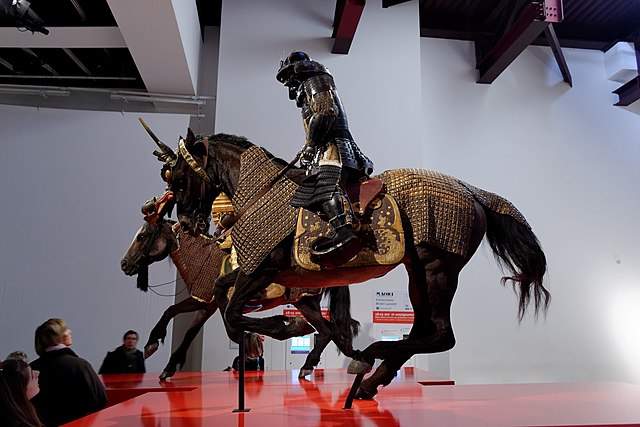Search the wiki
TOTRS 221118 – Tomeo Gozen Meeting Notes
Meeting notes from a catch up with Morgan Pitelka of UNC Japanese History Lab regarding Tomoe Gozen.
Overview
A few months ago, we got in touch with Morgan Pitelka, Professor of History and Asian Studies at UNC Japanese History Lab, for some advice and feedback on the TOTRS project. We specifically discussed Tomoe Gozen and below are the notes from the meeting.
Notes
- Tomoe Gozen is a legend mentioned in the book, The Tale of the Hieke.
- The book is from the classical period (the Roman Age when compared to Western history).
- Why was her story so well known? Other women are not so well known from that period.
- During the particular moment in which she lived, her family was more important than her “female-ness”. Gender became more important later on, where a woman would only fight to defend her family and home. They did not go out on horseback later on.
- There may have been similar cases to that of Mulan. They probably got away with the deception, so we do not know about those stories. Tomoe Gozen is pretty unique in that case.
- Japan goes through phases of becoming patriachal and biased towards women. China is the source of the patriachy where men do “stuff” outside the home and women do “stuff” in the home. This switch took a period of 400 years. Tomoe Gozen lived in a period when this was not the case.
- Warfare in the 12th century focussed on calvalry and archery.
- What kind of horses? Horses have been in Japan as long as their writte record.
- Did the horses come from China or Korea? Mongolian horses? Bred for speed and dexterity. Look at British Museum collection of paintings.
- How do we represent a Japanese horse? What patterns? Length of the mane?
- Ceramics were made in the shape of horses that are dated before written culture.
- She had all the armour of samurai from that period. Platelets can move – like chainmail. Flexible and strong. The armour is good against arrows but less effective against swords.
- Attack from afar with bow and arrows, and try to avois swords. But if need be, sweep inwith the sword.
- Hopefully, you never have to get off the horse.
- The Tale of the Heike is a dramatisation of the real war. Study the book for geographical locations.
- The samurai were highly educated aristocrats and elite. They would read poetry before death.
- Samurai were a new class in aristocracy.
- What does someone look like from so long ago? Look at paintings.
- Look at real examples of armour, saddle, weapons.
- Lots of paintings of how the samurai looked.
- Emphasis on hair and skin. A way of implying aristocratic heritage.
- Farmers and workers will be in the sun working.
- Long hair does not work well in the working environment. It gets in the way. So workers would have short hair.
- Aristocrats can spend entire lives indoors. So no sun touching their skin.
- Colourising was part of the aristocratic culture. Natural paleness and application of white makeup.
- Aristocratic women would also blacken their teeth.
- Emphasise the movement of Tomoe Gozen and the horse.
- Look at woodblock print representation – Tokugawa period. Only made during the 17th – 19th century.
- Lots of imagery of earlier Samurai conflict here: https://ukiyo-e.org/
- All images from Wikimedia Commons – a collection of 89,293,900 freely usable media files to which anyone can contribute.






